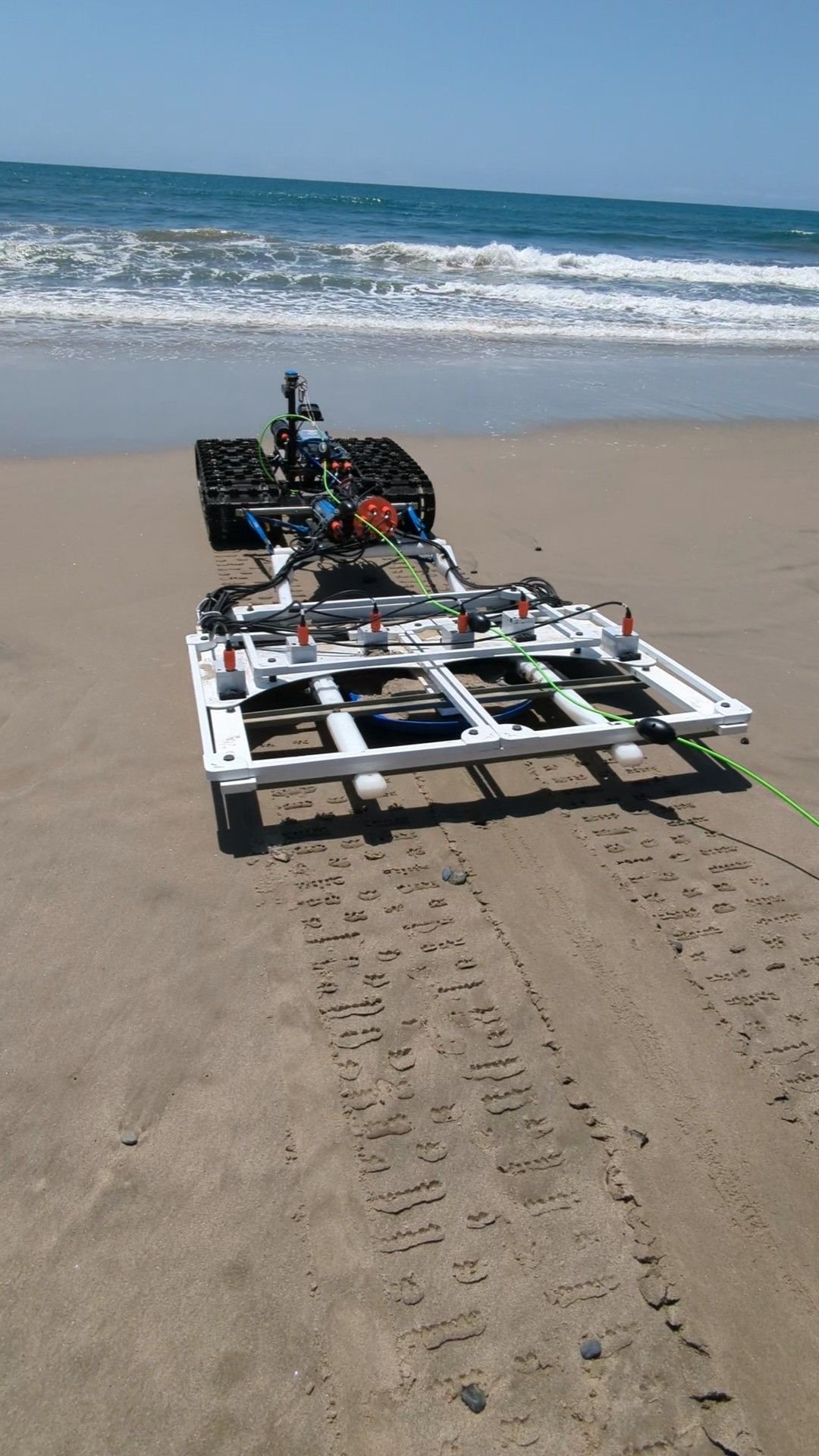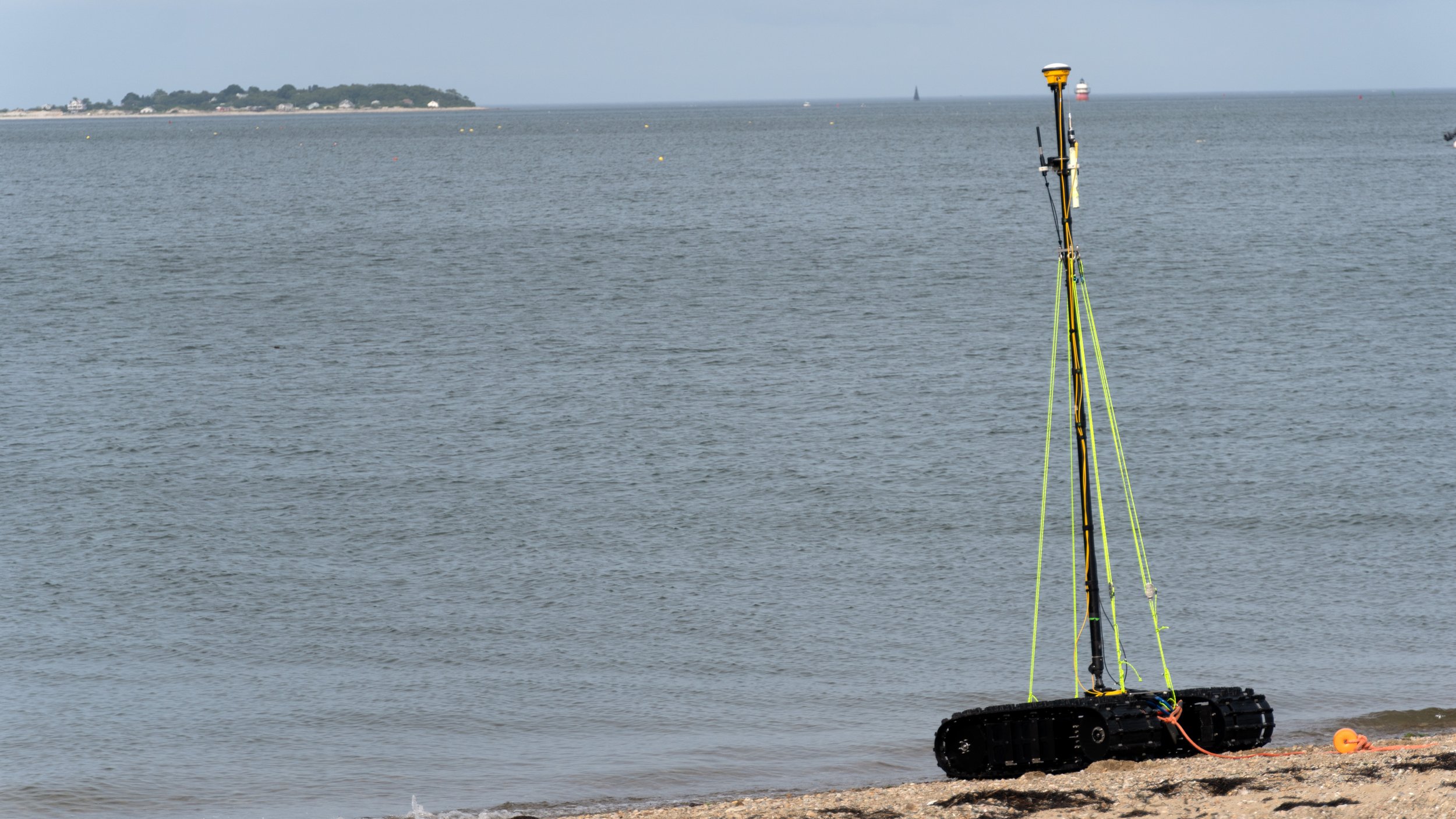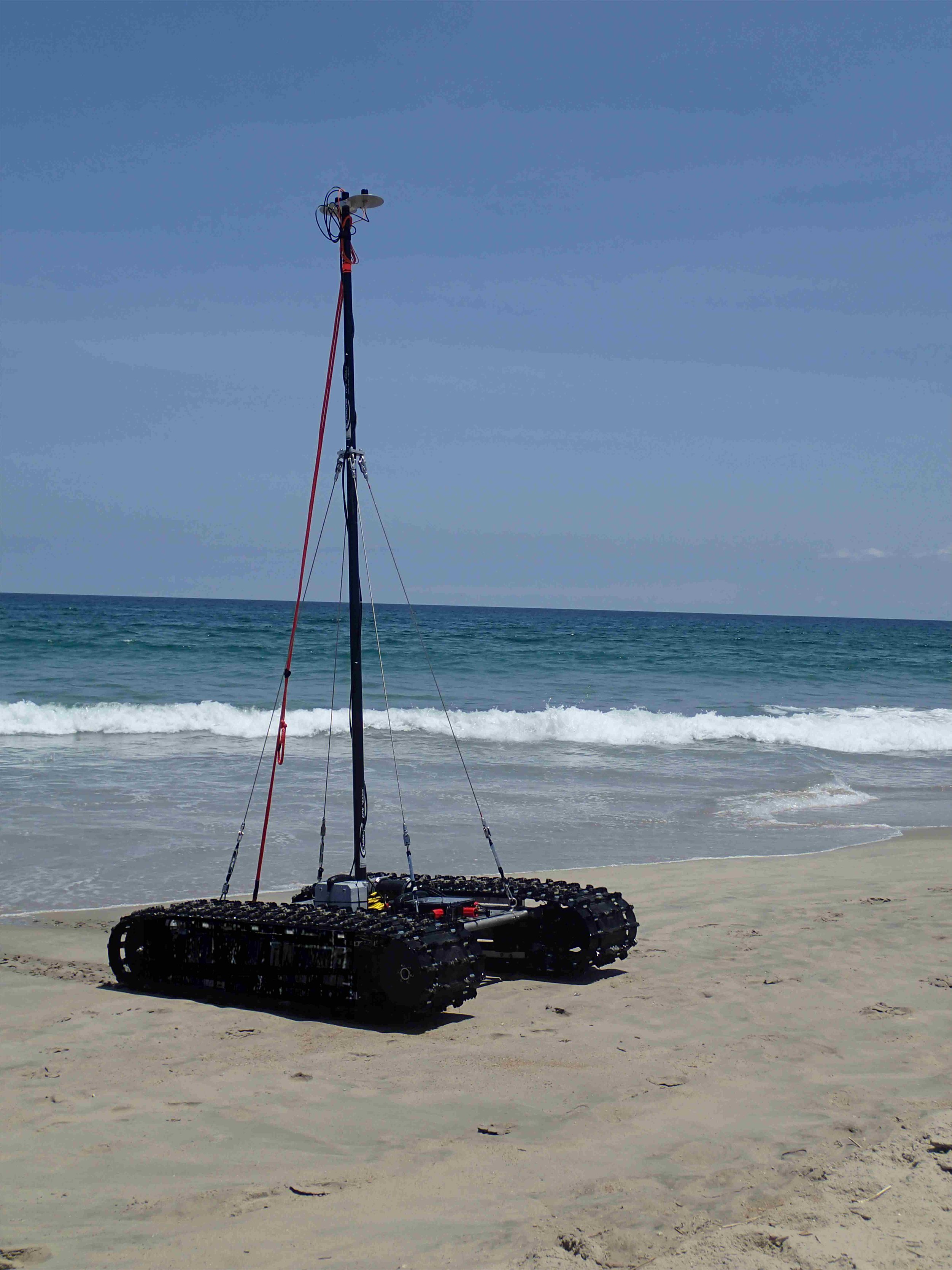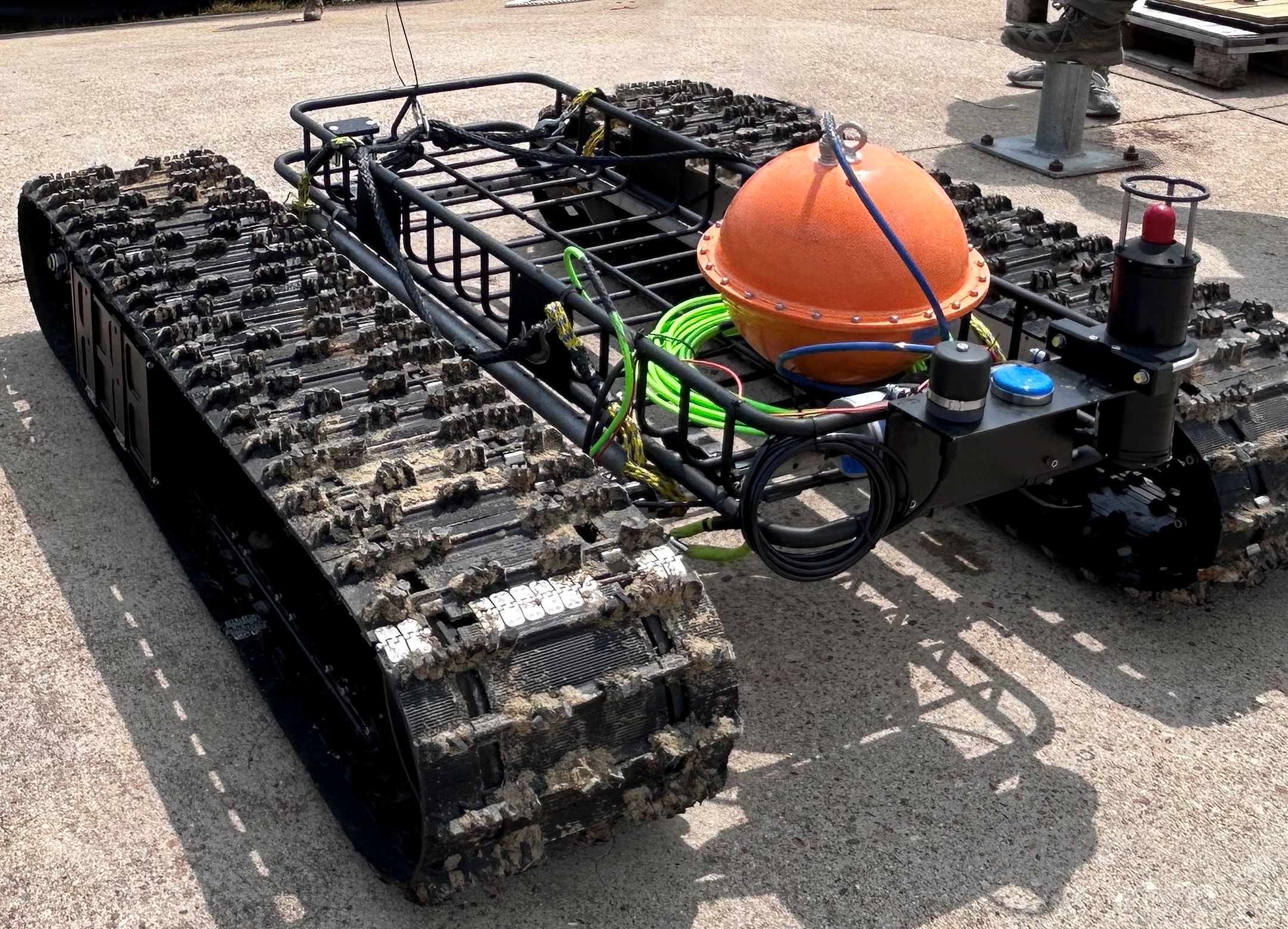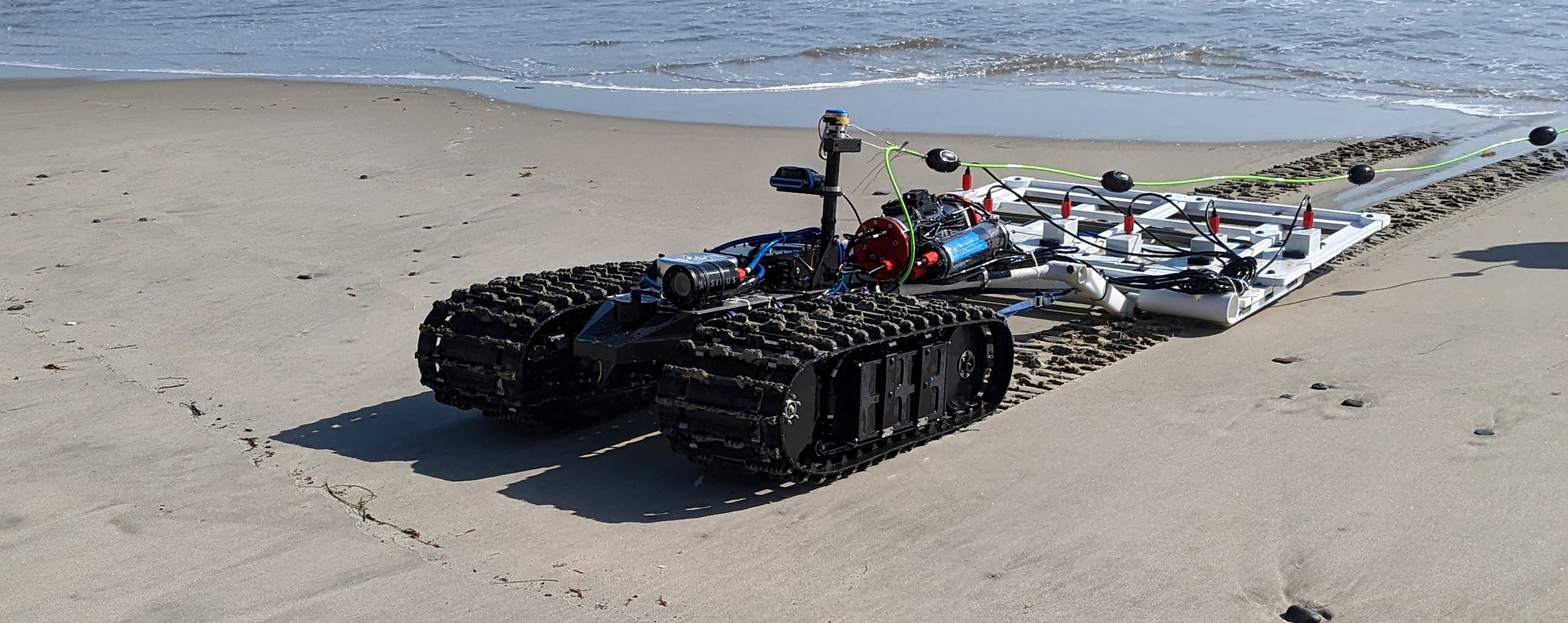
Bayonet AUGV
Bayonet Surf Zone Robotics
Merge the Sea and Land Domain
Bayonet AUGVs bridge the gap between open water and the beach with a series of Autonomous Underwater Ground Vehicles that can transition from the ocean into the surf zone and onto the beach.
Bayonet AUGVs are built to be extremely adaptable autonomous platforms with extensive payloads that can perform many missions and tasks where an ROV, AUV or USV cannot. Bayonet Ocean Vehicles are powerful tools for operators looking for a safe and stable platform for working in the toughest marine environments.
AUGV for Amphibious Surf Zone Robotics Operations
Bayonet Autonomous Underwater Ground Vehicles (AUGV) are available in three sizes to meet the needs of your surf zone robotics mission requirements: the two-person portable 150 for smaller payloads and lighter weather and surf conditions, the 250 for harsher conditions and more extensive payload requirements, and the largest in the series, the 350, for your heaviest payloads and harshest conditions.
Built on OPENSEA, Bayonet AUGVs provide flexible configurations with the ability to scale the vehicles’ size and power requirements to meet the demands of any payload, operation, or environment.
The vehicles’ low profile and high stability allow them to penetrate the surf zone with up to 6 feet (1,82 m) of wave height and collect data independent of sea state and weather, providing more days on task.
Low domestic power draw allows for long-term station-keeping of 100 days for tidal or current observations; the sink gauge will negate any scouring. Program your system to collect tidal data using the pressure sensor, and then run the survey mission before you recover it.
Standard range is 10 miles submerged and 24 miles dry; a 1.5 knot speed provides high sounding density.
Three single operator modes are available: autonomous, tethered, or RF link buoy.
Bayonet 150
The Bayonet 150 is a two-person portable surf zone robotics platform ideal for light weather and surf conditions, small boat deployment, and smaller payloads.
Dimensions: 112 cm x 91,5 cm x 25,4 (44 x 36 x 10 inches)
Standard Open Deck Space: 61 cm x 30,5 cm (24 x 12 inches)
Weight (with batteries): 131,5 kg (290 lbs)
Duration: approximately 6 hours
Deck Capacity: 91 kg (200 lbs)
Depth Rating: 100 m
Built on OPENSEA
Greensea GS4 INS
EOD and MCM Ready
Amphibious Reconnaissance & Neutralization
The U.S. and NATO countries are developing programs and CONOPS requiring unmanned systems that operate in the surf zone for raid and recon support. The USMC LEON program complements the U.S. Navy’s EOD program by extending Explosive Ordnance Neutralization from the littorals through the beach exit.
It was selected as a finalist in The Defense Innovation Unit’s (DIU) Autonomous Amphibious Response Vehicle (A2RV) program’s rapid prototyping phase. Out of 67 proposals, the Bayonet 250 crawler prototype was chosen for its exceptional performance and potential to detect, identify, and neutralize naval mines and other explosive hazards in the challenging surf and beach landing zones.
Surf Zone Robotics for UXO Survey
The Bayonet 250 AUGV demonstrates the power and flexibility of OPENSEA to rapidly integrate and deploy a new sensor suite for the task of identifying UXO in the surf zone while showcasing its capabilities.
Operating over 8 days and covering 18 square kilometers in depths of up to 10 feet amidst wave heights of 1,2 m to 1,83 m (4 to 6 feet) in the challenging surf zone, the Bayonet 250 provided a stable and reliable platform for conducting the survey that included a towed sled equipped with White River Technology’s (WRT) marine APEX technology, which seamlessly integrated into OPENSEA.
The rapid integration of the sensor sled facilitated the detection and classification of objects, with a buried depth of up to 3 meters based on material composition.
Bayonet 250
The Bayonet 250 is the all-around surf zone robotics workhorse of the Bayonet line. The 250 can be assembled, tool free, in field while maintaining two-person portability. The larger footprint and heavier design allow for additional payloads and operations, as well as heavier weather and surf conditions.
Standard Dimension: 122 cm x 122 cm x 38 cm (48 x 48 x 15 inches)
Weight (with batteries): 177 kg (390 lbs)
Duration: approximately 6 hours
Depth Rating: 100 m
Deck Capacity: 113,5 kg (250 lbs)
Built on OPENSEA
Greensea GS4 INS
Beach & Coastal Survey
Surf Zone Robotics with High Seas and Foul Weather Tolerance Means Fewer Survey Days Lost
By incorporating a mast onto the central frame of the vehicle, we are able to mount a GPS RTK on the top to gather extremely accurate survey data about the surf zone area and beyond. With a known fixed distance from the GPS to the bottom of the sea floor, we are able to very accurately collect coordinate data meshed with the navigational data of the vehicle and produce point cloud shoreline data. Typical Bayonet control interface and data collection is standard with the crawler package.
During operations, users will find it beneficial to utilize the autonomous navigation of the system and plan out a pre-set navigation plan. During this map planning, users will be able to choose from three different map-planning options: straight line, circular, or sawtooth. In addition to the style of map planning, users can also define the spacing of the map plan. Once a map plan is chosen, the operator will be able to begin the mission plan and allow the robot to run the mission on its own until the last waypoint is achieved.
Bayonet 350
The Bayonet 350 is the largest AUGV produced by Greensea IQ. Its size makes it the most capable surf zone robotics vehicle for handling the harshest conditions and largest payloads.
Dimensions: 183 cm x 152,5 cm x 46 cm (72 x 60 x 18 inches)
Weight (with batteries): 272 kg (600 lbs) modular; fits in work-sized truck
Depth: 100 m
Speed: 1.8km/hr
Deck capacity: 113,5 kg (250 lbs)
Built on OPENSEA
Greensea GS4 INS

Bayonet Surf Zone Robotics ·
Bayonet Surf Zone Robotics ·






